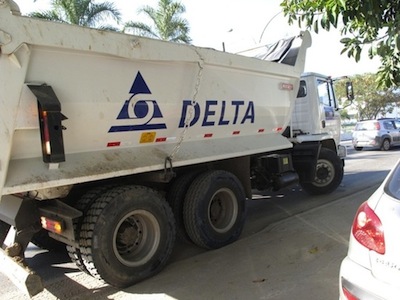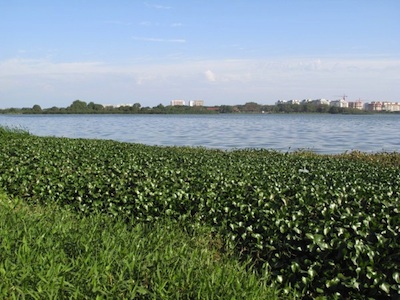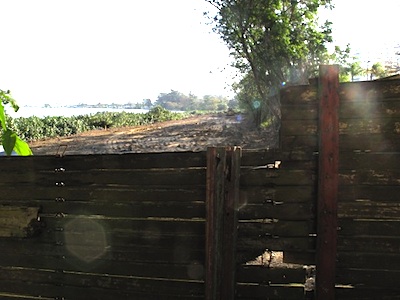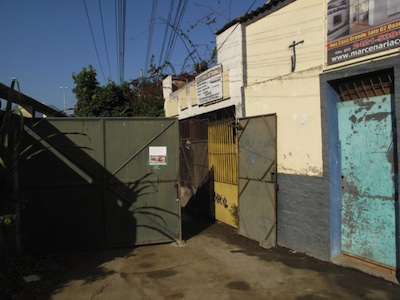“This is what you call a social clean-up. 68 families have been moved, the first and largest part of the community, so that they can build a pretty garden at the entrance of the condominium. It has ended up looking like Miami. When residents opened their eyes it was already too late. And now, once again, for no (good) reason, they are going to get rid of the rest.”
This outburst comes from Maria Zélia Carneiro Dazzi, President of the Association of Residents and Fishermen of the Vila Arroio Pavuna Community, in Rio’s West Zone. Descendent of the first inhabitants of the community, Dona Zelia has lived through the history of evictions that mark the advance of real-estate interests (westward) across the city.
The fishing community was first settled in 1910, on the banks of the Rodrigo de Freitas lake in Rio’s South Zone. In 1938 the community was transferred for the first time to the edges of the Jacarepaguá Lagoon (far to the west). In 2006 the building of a luxury condominium in the neighbourhood meant that houses and the community were uprooted once again.
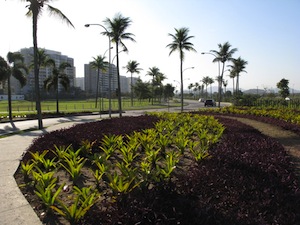 “The area of the condominium and everywhere around used to be a huge forest. You would go out with a piece of bread in your hand because there were so many animals: snakes, capivaras, and rabbits. There used to be beautiful blue butterflies. All of the noctural birds perished. There were Carão birds, the one that looks like a chicken and sings beautifully. At that time (the time of the building of the condominium) the animals were able to escape to land nearby. But this time no, all of them perished, poor things.”
“The area of the condominium and everywhere around used to be a huge forest. You would go out with a piece of bread in your hand because there were so many animals: snakes, capivaras, and rabbits. There used to be beautiful blue butterflies. All of the noctural birds perished. There were Carão birds, the one that looks like a chicken and sings beautifully. At that time (the time of the building of the condominium) the animals were able to escape to land nearby. But this time no, all of them perished, poor things.”
Dona Zélia is referring to the new building work where lorries and tractors are preparing to build an overpass as part of the TransCarioca, the motorway between the Galeão airport and Barra da Tijuca, which is one of the infrastructure works for the World Cup and The Olympics. To complete the work, the council intends to remove the rest of the 28 families who live there, getting rid of a century-old community.
Dona Zelia says that she only found out that she would lose her house when TV reporters came to the neighbourhood the day after it was announced on the daily news.
“The truth is that we don’t understand what is going on. The blueprints for what will happen to the community are different every time, always containing mistakes. We understand they will need to evict the families from the houses at the front (where roadworks must take place) but there is no need to remove all of them,” she points out.
Organised by the activist Dona Zélia herself, residents have decided to not allow the City to evaluate the value of their houses for the purpose of eviction (as that implies consent). They have made the most of the fact that there is a gate isolating the community. They have appealed to the State’s Public Defence Unit. So far, residents have not had access to the plans of the project and complain about lack of information.
“My house is not for sale. Therefore I have no obligation to let people in,” says Dona Zélia.
The marks of black paint that the Municipal Secretary of Housing painted at the entrance of the neighbourhood, supposedly to show which houses will be demolished, were painted over by the residents with white paint.
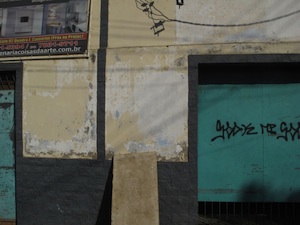
“This is a Nazi practice; we are not going to accept it,” says Dona Zélia.
She continues planning for the future. She completed a course to facilitate community projects at Fiocruz and would like to promote ecological tourism around the Lagoon area, which today is severely polluted. The fight to save the community has meant that she has not been looking after her own health. She took a bad turn and for a short time stopped being able to feel the left side of her body. She also fell over on the street and injured her knee but she didn’t have time to get medical attention. As well as leading against the threat of eviction, she has to look after her husband who is suffering from recently diagnosed cancer.
Despite all of this, Dona Zélia is still determined as she walks through the community, pointing out a century old tree and lamenting the loss of another that used to be near it. It was at this moment that she came out with the most memorable phrase of the interview.
“This is what you call a social clean-up. 68 families have been moved; the first and largest part of the community, so that they can build a pretty garden at the entrance of the condominium. It has ended up looking like Miami. When the residents opened their eyes it was already too late. And now, once again, for no (good) reason, they are going to get rid of the rest.”
Delta Construction, owned by Fernando Cavendish, close friend of Governor Sergio Cabral, is responsible for the work that is going to remove the community.
Jacarepaguá Lagoon, which today is severely polluted: Dona Zélia would like to promote ecological tourism in the area.
The border between Dona Zélia’s land and the landfill work which is being done before the overpass is built.
Gate which prevents the City from accessing houses in the community.
Translated and reprinted with permission. Click here for the original article.


